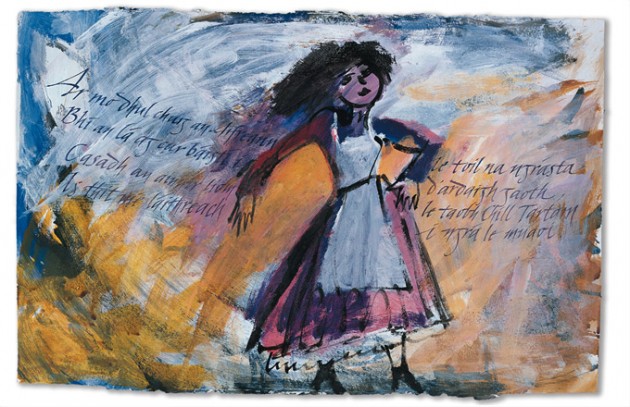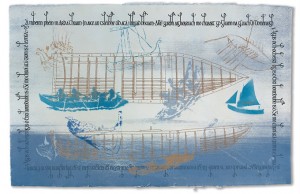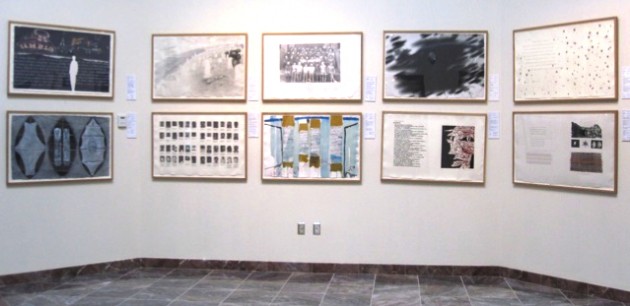 An Leabhar Mor/The Great Book of Gaelic brings together the work of more than 200 poets, visual artists and calligraphers from Scotland and Ireland to create a major contemporary artwork in the form of a visual anthology.
An Leabhar Mor/The Great Book of Gaelic brings together the work of more than 200 poets, visual artists and calligraphers from Scotland and Ireland to create a major contemporary artwork in the form of a visual anthology.
The 100 Gaelic poems have been nominated by leading poets and writers such as Seamus Heaney, Hamish Henderson and Alistair Macleod as well as the contributing poets themselves. The selection features work from almost every century from the 6th to the 21st and includes the earliest Gaelic poetry in existence. Comedy, tragedy, love, death, the spiritual and the bawdy are all represented in poems by Sorley MacLean, Nuala Ni Dhokhnaill, Iain Crichton Smith, Michael Davitt, Kevin MacNeill and Cathal O Searcaigh.
The 100 visual artists- 50 from each country- were commissioned to respond to the poetry in a variety of media. The artists include Alan Davis, Rita Duffy, Will Maclean, Brian Maguire, Frances Walker, Anna Macleod, John Byrne, Shane Cullen, Alasdair Gray, Noel Sheridan, Calum Colvin, and Alastair MacLennan. A small team of calligraphers and typographer Don Addison worked in collaboration with the artists to integrate the key lines of poetry and the artist”s images.
The resulting book is an extraordinary celebration in words and  pictures of Gaelic culture from the earliest times to the present day.
pictures of Gaelic culture from the earliest times to the present day.
It was the Irish Gaels known as Scoti who migrated into Scotland from the 6th century and gave it their name. The most famous artifact from Ireland’s golden age, the Book of Kells, was almost certainly begun on the Scottish island of Iona. It was the Gaels who united Scotland in the 9th century and made Gaelic the language of the medieval court. The Irish Gaelic culture of the Scottish Highlands and Islands went on to survive that of Ireland itself by a century and a half.
Scots were “planted’ into Northern Ireland from the 17th century and hundred of thousands of Irish people migrated to Scotland in the 19th and 20th centuries, but it is less well known that the Hebrides were once mapped as “the Irish Isles” or that Michael Davitt was a leading figure in the Scottish Highland Land League.
Amidst the ebb and flow of history, the Book of Kells has become a fixed symbol of the complexity and sophisticated of the shared of the shared culture that produced it.
The Gaelic language remains the most potent living link between both countries. Through the Leabhar Mor the Gaelic community has created another great work of art that renews the connection between Gaelic Scotland and Ireland and celebrates the diverse strands of contemporary Celtic culture.
30 prints from the book are on display on the walls of the Port Hawkesbury Civic Centre’s J. Franklin Wright Gallery until March 31st. Gallery hours are Monday – Friday 4:00-10:00 p.m. and Saturday and Sunday 9:00-4:00.



yvette says
Love this exhibit!! There were pieces this past fall at CBU, its the kind of thing you can pour time into viewing because there's so much to it, the poems, the calligraphy, the amazing contemporary art. Glad to hear its in the J. Franklin Wright, that's a very neat viewing space. I'll definitely be taking a pop in!